Knowledge
19.12.2022 The most common settings for gemstone jewelry
In ancient Egypt already, particularly valuable stones were cut and set, as excavation finds prove. It was a long way from these first bands for framing gemstones to the finely designed ring settings of today. What has remained fundamentally the same, however, is that a setting for a gemstone has, on the one hand, the functional purpose of protecting the stone or holding it in place in the piece of jewelry, and, on the other hand, it presents the stone and shows it off to its best advantage. Since jewelry with gemstones can also be considered as an investment, a basic knowledge of how settings are made and an overview of the most common settings is also interesting for investors.

How are gemstone settings made?
In the gemstone field, a setting always refers to a fixation made of metal that connects a stone to a piece of jewelry. Gemstone setting is a separate branch of goldsmithing that requires knowledge of gemology, gemstone cutting and polishing. To make a gemstone setting, a setting must be chosen that matches the particular cut. With lower-quality stones, the setting also serves to compensate for or conceal flaws in the stone, such as inclusions.
During the production of a gemstone setting, the gemstones are examined to assess not only the shape but also the material properties (how brittle is it?), for example, and the necessary steps in the production are derived from this. For the actual production of the setting, the metal is then prepared so that the gemstone can be fitted. Depending on the type of setting, it must be milled to size, bent open, fixed with fine pliers, etc. In the case of rings, the gemstones can be attached to the ring itself, which is also called a “hoop” or “ring rail” by goldsmiths, or to the so-called ring head, which is also called a ring plate.
A setting can conceal flaws in the gem, such as inclusions.

Common gemstone settings
Frame setting
In a frame setting or bezel setting, the sides of the stone are enclosed by metal strips that slightly overlap the stone. The gemstone does not rest on the setting, but on the heel (the eponymous frame), which allows for an open underside with increased light penetration. The bezel setting is implemented with a curved or straight edge. It is one of the oldest ring settings and is used primarily for oval and round cut stones.
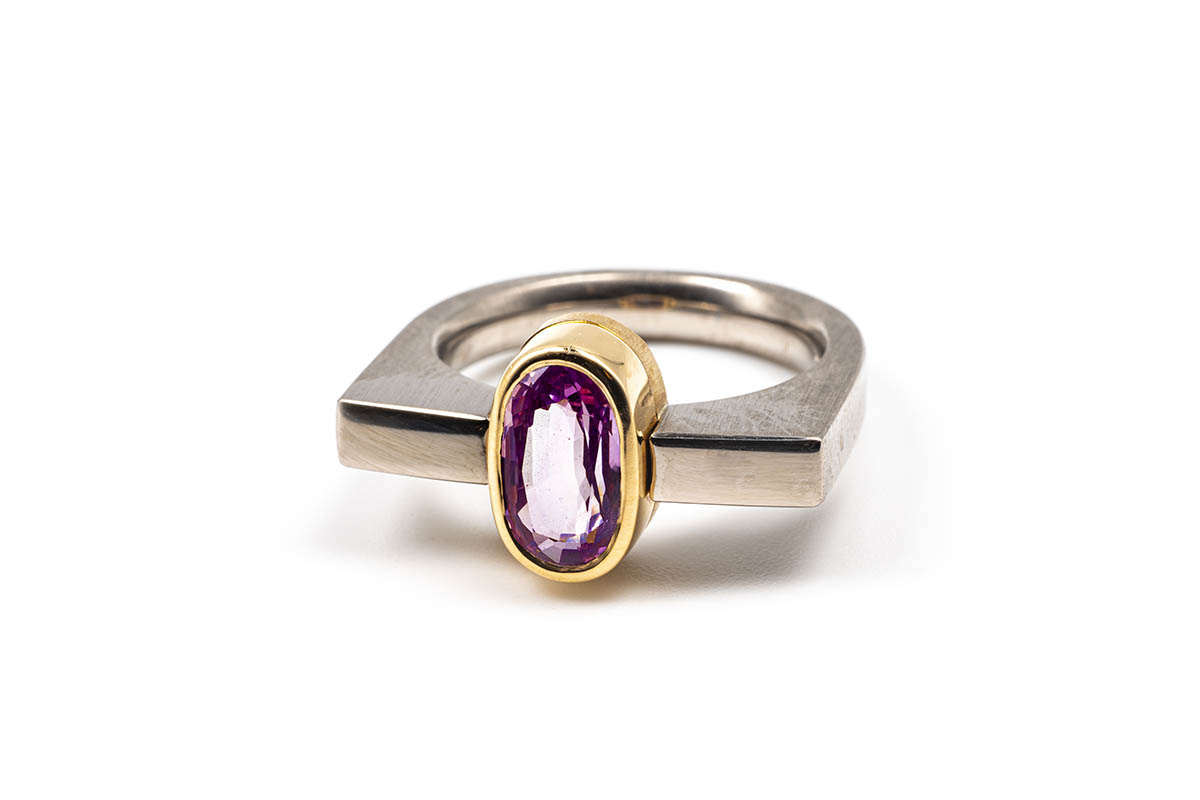
Claw setting
The claw or prong setting is the most common type of setting. The gemstone is set in a basket of claws, which are bent over and rest on the stone to hold it in place. There are settings with three to eight claws, they can also be set twice and have a round, pointed or flat shape. The more claws used, the more securely the stone sits. The prong setting is suitable for large, single stones and is especially popular for solitaire and engagement rings.
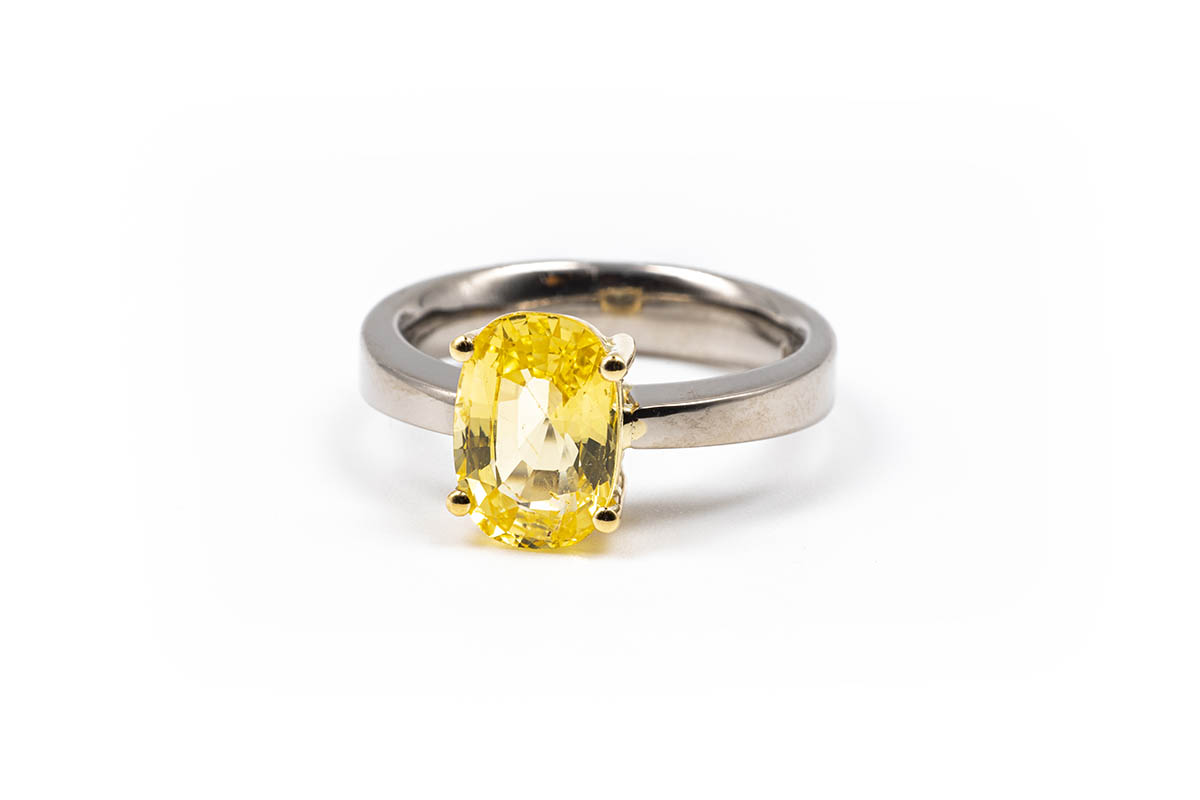
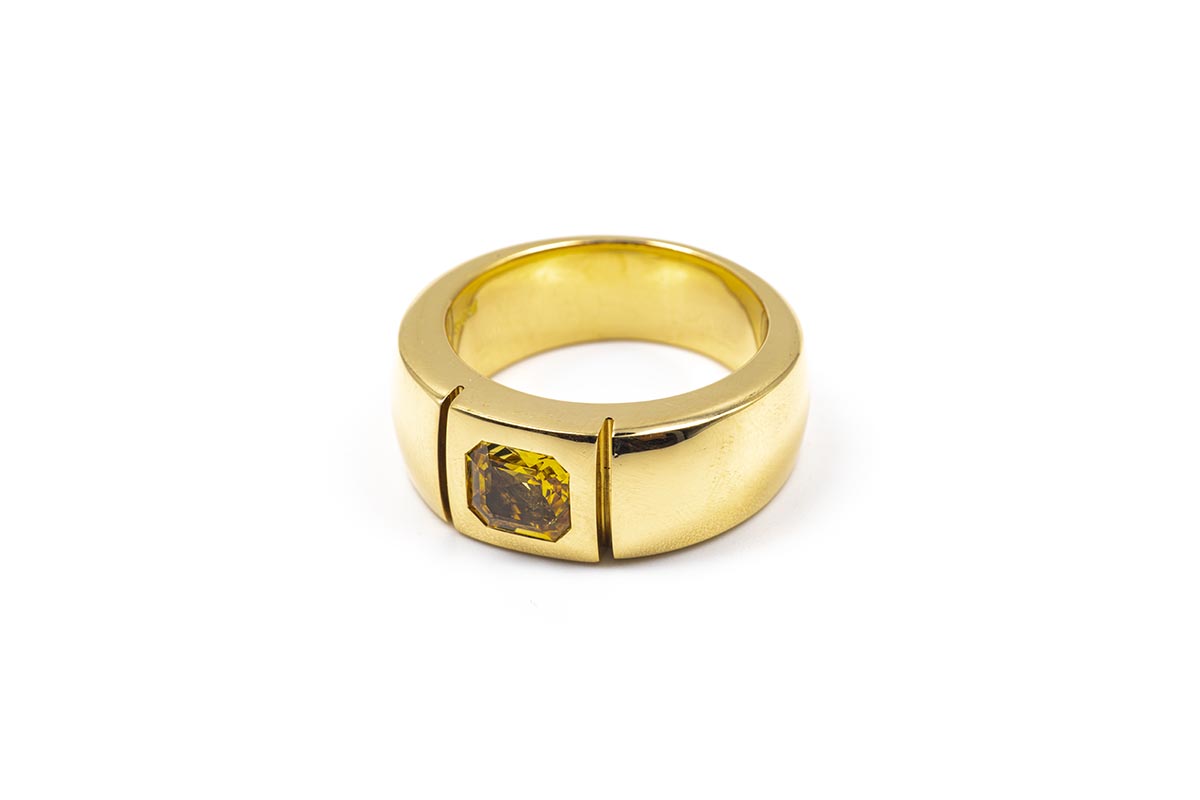
Rubbed setting
In the rubbed setting, the stone is set into a cone-shaped indentation in the jewelry, the surrounding metal thereby pressing against the stone. The stone thus sits well protected in an indentation, and the surrounding metal closes with the top of the stone.
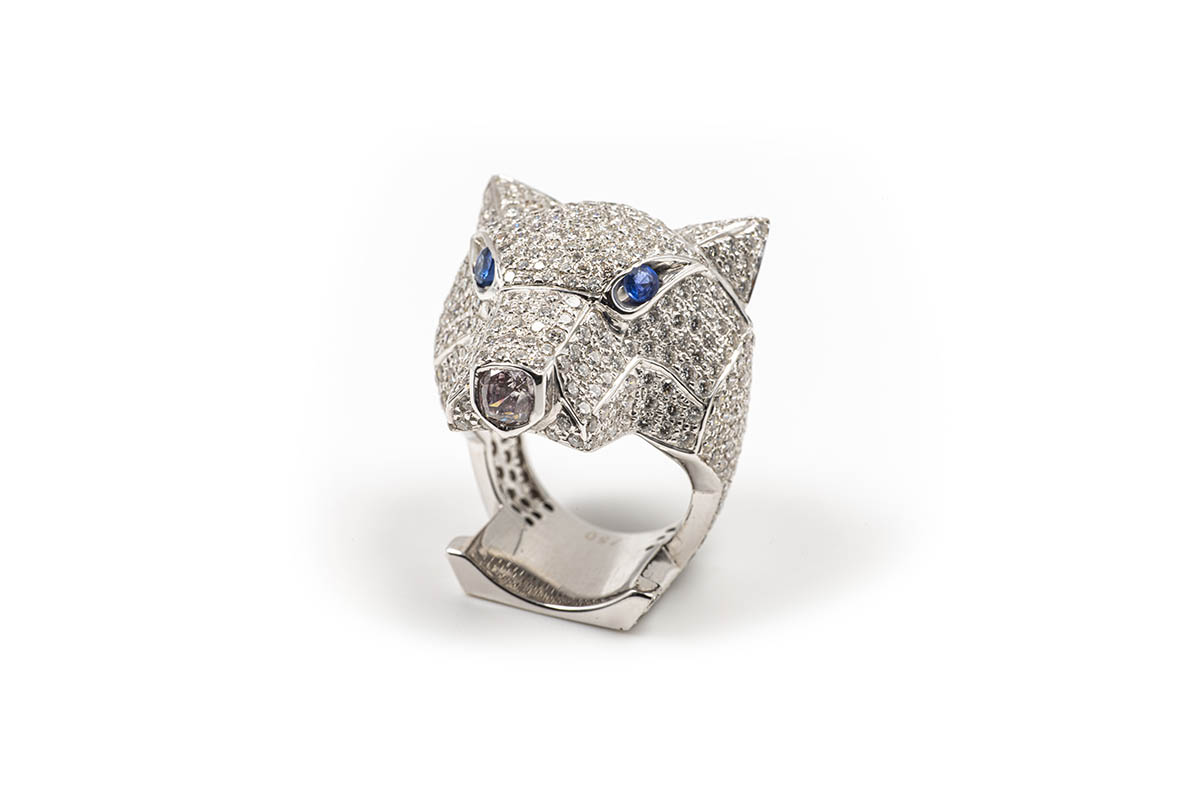
Pavé setting
In French, “pavé” means “paved,” and pavé setting gives the impression of a paved surface: many stones are set together, creating an impression of larger size. This type of setting is particularly suitable for small brilliant cut stones. The individual gemstones are secured and separated from each other by small beads of setting metal, sitting so close together that the metal is barely visible.
Channel setting
In channel setting or tunnel setting, gemstones are arranged in a channel consisting of two metal tracks. This type of setting is used for small gemstones of the same size, the stones end at the same height with the ring band. The setting is particularly worthwhile for rectangular or square stones, e.g. tennis bracelets are designed in this way.
Tension setting
In the tension setting, the stone is held only by the mutual tension between two pieces of metal. It is a very plain setting, the light can penetrate the stone particularly unhindered.
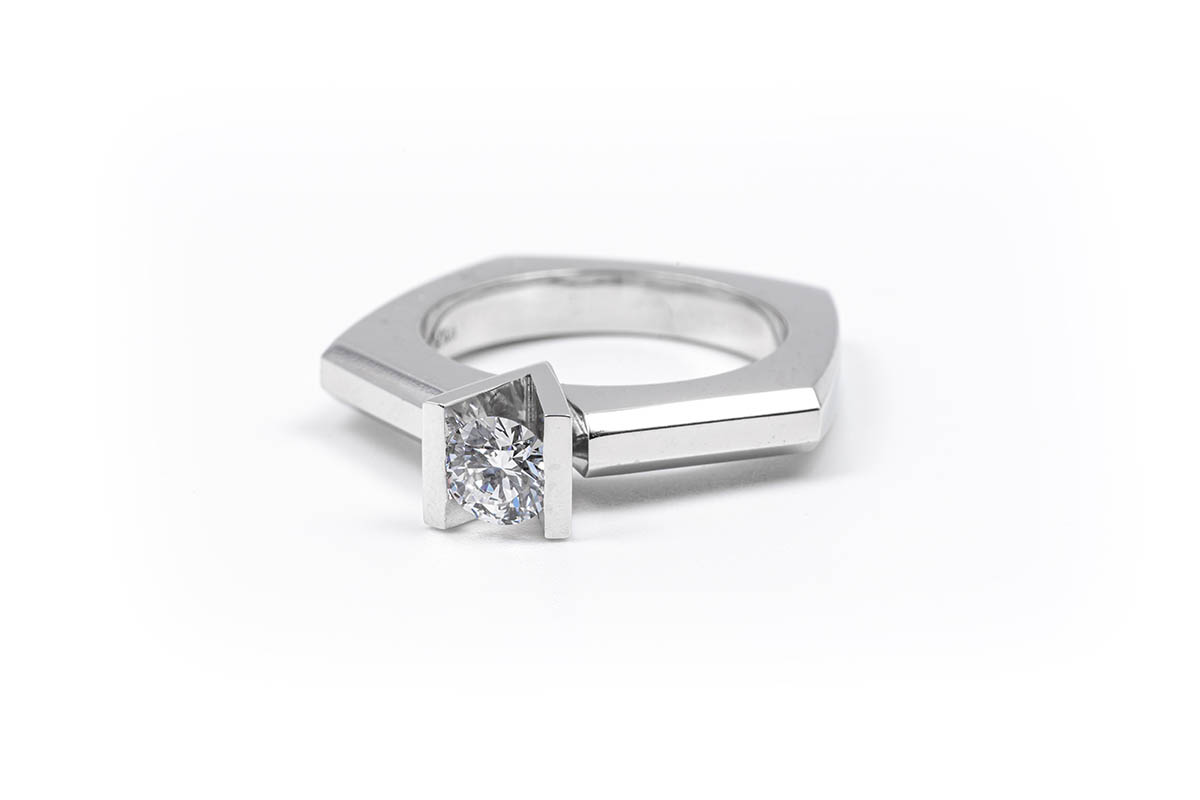
Bar setting
In this variation of the channel setting, the gemstones are set individually between metal strips. The sides of the gemstone remain open to emphasize sparkle and brilliance.
Chaton setting
In French “chaton” already means setting, this is a mixture of rim and claw setting. The rondiste is completely enclosed by a band of precious metal, and at the same time claws also fix the overhanging stone.


